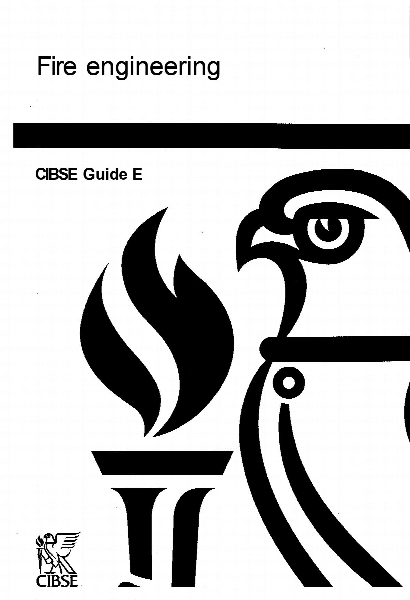Fire engineering : CIBSE guide E. 2nd
- نوع فایل : کتاب
- زبان : انگلیسی
- مؤلف : Chartered Institution of Building Services Engineers.
- ناشر : London : CIBSE,
- چاپ و سال / کشور: 2003
- شابک / ISBN : 9781903287316
Description
1 Introduction 1.1 About this Guide 1.2 What is fire engineering? 1.3 Fire safety engineering approach 1.4 Benefits of a fire engineering approach 1.5 Purpose of this Guide 1.6 Contents of this Guide 1.7 Other sources of information References 2 Legislation, standards and strategy 2.1 The concept of fire engineering 2.2 Consultation and concensus 2.3 Legal considerations 2.4 Codes and standards 2.5 Design implications 2.6 Client/occupier's role 2.7 Insurance standards 2.8 Fire safety strategy 2.9 Quantified risk assessment References 3 Building designation 3.1 Introduction 3.2 Common factors 3.3 Risk profiles 3.4 Designing the fire precautions 3.5 Implications of classification by purpose group References 4 Means of escape and human factors 4.1 Introduction 4.2 Objectives of escape design 4.3 Prescriptive codes 4.4 Fire safety engineering design approaches 4.5 Pre-movement times 4.6 Evaluation of total pre-movement times 4.7 Travel time 4.8 Information and wayfinding systems References 5 Compartmentation and spread of flame 5.1 Introduction 5.2 Compartmentation and statutory controls 5.3 Property protection 5.4 Compartment boundaries 5.5 Compartmentation and modern building design 1-1 1-1 1-1 1-1 1-1 1-2 1-2 1-3 1-3 2-1 2-1 2-2 2-4 2-7 2-8 2-9 2-9 2-10 2-11 2-12 3-1 3-1 3-1 3-5 3-5 3-6 3-8 4-1 4-1 4-1 4-1 4-6 4-8 4-8 4-10 4-13 4-14 5-1 5-1 5-1 5-2 5-2 5-3 5.6 Structural fire protection 5.7 Fire engineering approach to compartmentation 5.8 Control of fire during growth stage References 6 Alarm, detection and emergency lighting 6.1 Introduction 6.2 Specification of alarm systems 6.3 Types of fire detection systems 6.4 Zoning 6.5 Breakglass and manual call points 6.6 Types of fire detection devices 6.7 Siting and spacing of detectors 6.8 Control equipment 6.9 Hazardous areas 6.10 Emergency lighting References Appendix A6.1: Emergency lighting definitions 7 Fire and smoke ventilation 7.1 Introduction 7.2 Design of systems to protect area where fire starts 7.3 Design of systems to protect escape routes and firefighting shafts 7.4 Design of systems to aid firefighting 7.5 Choice of system 7.6 Design, reliability and performance 7.7 Components of smoke management systems References 8 Fire suppression 8.1 Sprinkler protection 8.2 Foam systems 8.3 Gaseous systems 8.4 Water mist systems References 9 Firefighting 9.1 Introduction 9.2 Legislation 9.3 Application of health and safety legislation 9.4 First aid firefighting and training for occupants 9.5 Firefighting equipment and training for fire brigades 9.6 Standards of fire cover 9.7 Fire service water supplies 9.8 Fire service access: external to the premises 9.9 Fire service access: within the premises 9.10 Smoke and heat exhaust ventilation for firefighting access 9.11 Implications of installed sprinkler systems 9.12 Relationship between firefighting attack and fire safety engineering 5-3 5-4 5-7 5-7 6-1 6-1 6-2 6-2 6-3 6-4 6-5 6-7 6-9 6-11 6-11 6-16 6-18 7-1 7-1 7-2 7-3 7-6 7-6 7-8 7-10 7-10 8-1 8-1 8-21 8-24 8-27 8-29 9-1 9-1 9-2 9-4 9-5 9-8 9-9 9-10 9-14 9-16 9-18 9-20 9-21 9.13 Building specific fire service pre-planning References 10 Fire dynamics 10.1 Introduction 10.2 Ignition 10.3 Fire growth 10.4 Compartment fires 10.5 Calculation of fire parameters 10.6 Effect of sprinklers 10.7 Smoke control: essential requirements 10.8 Smoke plumes 10.9 Accumulated smoke layer 10.10 Flame calculations 10.11 Fire and smoke modelling References Appendix 10.A1: Rack storage t-cubed fire Appendix 10.A2: Background to equations 11 Fire safety management 11.1 Introduction 11.2 Legal obligations and statutory duties 11.3 Designing for a manageable building 11.4 Construction to handover 11.5 The fire safety manual 11.6 Authority and responsibilities of the fire safety manager 11.7 Communication 11.8 Fire prevention 11.9 Ensuring systems respond properly in a fire emergency 11.10 Planning for a fire emergency 11.11 Management of a fire emergency 11.12 Other planning issues 11.13 Changes to a building References 12 Fire safety on construction sites 12.1 Introduction 12.2 Long term objectives 12.3 Implications of site fires 12.4 Legislation 12.5 Aspects to be considered in guidance documents 12.6 Objectives of fire precautions during construction 12.7 Designer's responsibility 12.8 Building construction works 12.9 Management and communication 12.10 Motivation for provision and maintenance of fire precautions 12.11 Built-in fire precautions References 9-21 9-27 10-1 10-1 10-2 10-2 10-2 10-3 10-7 10-8 10-11 10-14 10-17 10-19 10-21 10-22 10-23 11-1 11-1 11-1 11-1 11-3 11-4 11-5 11-6 11-7 11-8 11-9 11-11 11-11 11-11 11-12 12-1 12-1 12-1 12-1 12-1 12-2 12-2 12-3 12-4 12-5 12-6 12-6 12-7


